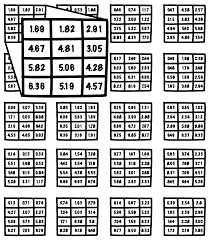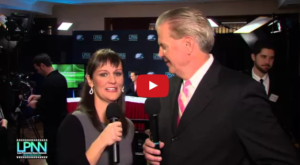Well, here we are again cleaning up the tinsel in time to throw some confetti for the New Year! As we enter the New Year, we can’t tell you how grateful we are to the loss prevention industry for listening and engaging in what TalkLP has to offer: our TalkLPnews APP bringing you breaking LP headlines, job alerts, solution provider info, research and more; as well as TalkLP podcasts, webinars and our Asset Protection Executive Xchange event series!
Phew, it’s been a packed year and we can’t thank you enough for engaging with TalkLP!
Stay tuned in by downloading the app, joining the TalkLP LinkedIn Group, and subscribing here!
Take a look at our top 10 most popular podcasts of 2021!
Number 10: “How LP Prepares You for the CEO Role” President and CEO of Goodwill Industries of Greater East Bay Mike Keenan, CPP, CFI, LPC joins TalkLP host Amber Bradley and guest co-host Angie Barnes, Executive Vice President of Sales for NAVCO. This episode discusses how Mike’s extensive experience in the loss prevention gave him a unique and valuable perspective for his current role as CEO. Mike talks how to use your LP perspective to bring value to every organizational conversation and why you can tell a lot about a person by the way they play golf. Thank you to NAVCO for sponsoring this episode and our stellar guest co-host Angie Barnes!
Number 9: “Demonstrating LP’s Value to Operations” TalkLP host Amber Bradley is joined by guest co-host David Shugan, CFI, Sr. Director of Asset Protection for Carter’s to pick the brain of Robert LaCommare, CFI, Vice President of Asset Protection for Big Lots Stores. This episode covers ways loss prevention professionals can demonstrate the value of LP to operations. We also hear what Robert would tell his 22-year-old self as he navigates his career. And both David and Robert give an homage to some leaders in the LP industry that impacted their careers! AND attention Solution Providers: some fantastic advice from these two here!
Number 8: “Calculating Career Moves” TalkLP host Amber Bradley discusses many leadership topics with Peter Chie, CFI, Operating Vice President, Asset Protection and Risk Management for Bloomingdale’s. Peter discusses the elements professionals should consider prior to making a career change and defines his 4 “B’s” of leadership and success. Take a look and listen from this thoughtful and strategic executive as he shares his wisdom — and a few laughs — with TalkLP.
Number 7: “Loss Prevention’s Take on Retail Predictions” TalkLP host Amber Bradley sits down with Vice President of Education at the National Retail Federation (NRF), Susan Reda to talk retail predictions for 2021 and why they matter to loss prevention. We also discuss how those predictions are holding up being mid-year and why it’s important for loss prevention executives to pivot. Susan also provides us a sneak peek into NRF’s BIG show and the future of NRF PROTECT. You can read Susan’s retail predictions by clicking here!
Number 6: “Unapologetic Series: Guess Who is Traveling Again?” TalkLP host Amber Bradley chats with Wicklander-Zulawski & Associate’s Brett Ward, CFI in our next episode of “Unapologetic.” Guess who’s traveling again? That’s right. And you can guess how excited he is about it! (actually, pretty excited!) Listen now to hear how he feels about it — what he’s hearing in the industry now we’re in the “new normal” (sigh) and what you should consider when doing Zoom interviews. Check it out!
Number 5: “What do CFOs Really Want from LP Executives?” This episode of TalkLP features host Amber Bradley and special guest co-host Peter Chie, VP of Asset Protection at Bloomingdale’s interviewing the CFO of Bloomingdale’s, Scott Zettell. Scott provides insights into exactly what he’s expecting when evaluating capital, what’s important to him from asset protection executives as well as how he started in asset protection and navigated his way to the c-suite. Take a listen to dive into these two brilliant minds from Bloomingdale’s!
Number 4: “Keith White’s Corporate Insights for America” TalkLP guest co-host Debbie Maples, VP Global Safety & Security: Intelligence, Investigations & Protection at Salesforce, joins host Amber Bradley to interview Keith White, Chief of Safety and Security for Salesforce.com at Salesforce. As many know, Keith started his career as a loss prevention agent and has ascended up the ranks to many c-level roles. Hear his “Rules for Corporate America” for the secrets to Keith’s success and what Debbie has learned with him as a mentor along the way. Tune in to hear us tackle many issues including diversity, dealing with corporate politics, and ensuring visibility within an organization!
Number 3: “In His Own Words: Ben Dugan on the WSJ’s Exposé on ORC” The Wall Street Journal published an exposé about organized retail crime (ORC) featuring Ben Dugan, Director of Organized Retail Crime & Corporate Investigations at CVS Health. It’s an interesting article that describes the war on ORC that retailers continuously fight — and how CVS is working hard to lead the industry on this growing challenge. In this podcast, host of TalkLP Amber Bradley gets candid with Ben on his thoughts about the article, the key points covered and how eCommerce continues to be a hinderance in this fight, specifically Amazon. Take a listen to Ben’s thoughts on the WSJ article and more about the fight on ORC.
Number 2: “Why Digging Into Retail Loss is so Important” Pamela Velose, Vice President of Asset Protection/Safety and Store Operations at Belk knows retail. There’s no doubt about that. Check out this podcast with special guest co-host John Matas, CFE, CFCI, Head of Global Fraud & Risk Operations at Etsy and TalkLP host Amber Bradley dig into Pamela’s career, how she has been successful and why digging into Total Retail Loss is so important.
Number 1: “The Importance of Explaining the Why” Chris Nelson, Senior Vice President / Head of Asset Protection at Gap Inc. with guest co-host Mike Keenan, President and CEO at Goodwill Industries of Greater East Bay. Chris talks with Mike and host Amber Bradley about his time in the military, the lessons he implements every day within his leadership role at Gap Inc. Chris discusses what it’s like to fill big shoes, lead a disparate team, and the importance of explaining the why.
These were the top 10 most popular, by super narrow margin, so check out the other value-packed podcasts at here. And we totally realize we didn’t give many of the Q4 released podcasts a chance! So don’t miss them here!
Don’t forget to download the TalkLPnews app for easy access to the podcasts and breaking loss prevention headlines constantly updating throughout the day!
Click here with your phone or scan the QR code below for easy downloading! You can also find the TalkLPnews app wherever you find your favorite apps!


















